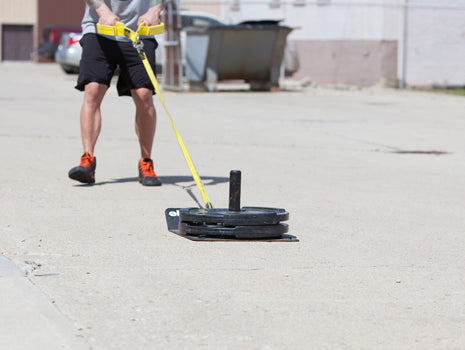training
The End of the Unilateral Vs. Bilateral Debate
Do you swing more towards one side than the other? I can tell you that I did. So, we decided to try a progression to work both single-leg and double-leg exercises. Here is what the eight weeks looked like for our athletes.
The X Factor
I'm giving more emphasis on "core" than I have ever before. After four weeks of adding in this X work, it's amazing how much better our athletes feel and look while running, doing agilities, and lifting.
Training the Modern-Day Baseball Player
I'm talking about the athletes that play one sport and one sport only year-round. In short, build trust and DON'T be afraid to lift your athletes. Here's what a yearly plan looks like.
A Coach's Guide to General Physical Preparedness
To reach peak performance, you must build a solid foundation dedicating time to GPP. Here's how to widen the base with GPP, when to use it, and how to implement it. Download the GPP Giant Circuit to get started.
The COVID-Proof Waverly Project in Phase II
Our revisited phase 2 will give you good ideas as to how to start your teams back up after an extended layoff. Waverly had one of their best years in school history following this.
How to Make It Big as a Strength Coach: Sacrifice to Advance Your Career
Now, it’s time to expect the unexpected, ask questions, be proactive, continue your own education, take it to the edge, sacrifice, present yourself accordingly, hustle, and seven more to-dos (part three of three)!
How to Make It Big as a Strength Coach: The Application Process
Now, it’s time to get our hands dirty... Let’s start with the internship search. You have to ask yourself what you want. Assuming you want to be a strength and conditioning coach, ask yourself the following questions (part two of three).
How to Make It Big as a Strength Coach: The Foundational Basics
I was very lucky to come from a great undergrad program, which prepared me to handle the demands of big-time strength and conditioning programs. Here's a reference for the college student aspiring to be a strength coach (part one of three).
25 Years of Leadership
In 2021, we as coaches need to find out what makes our athletes tick and then continue to throw logs on that fire. Some guys need a little, and some need a lot. Over the past 25 years in this business regarding leadership, this is the difference between winning and mediocrity.
Compliance is the Science
What’s the point of putting all that work into thinking and planning an in-season program if 90 percent of the people aren’t going to do it?
8 Tips to Become a Better Performance Coach
Here's what to do and what not do as an intern, graduate assistant, and assistant as you try to climb the ranks. I didn't find these tips by reading a manual, but through the first-hand experience as an intern at Florida International University and an assistant for the Division I HBCU North Carolina Central University.
The Integration of Unilateral and Bilateral Movements to Assist in Strength Development
The program within is called One Big, One Small—there is one major movement, and a secondary movement supports this major movement. It can be used by anyone irrespective of sport or training goal to improve performance or get bigger and stronger.












